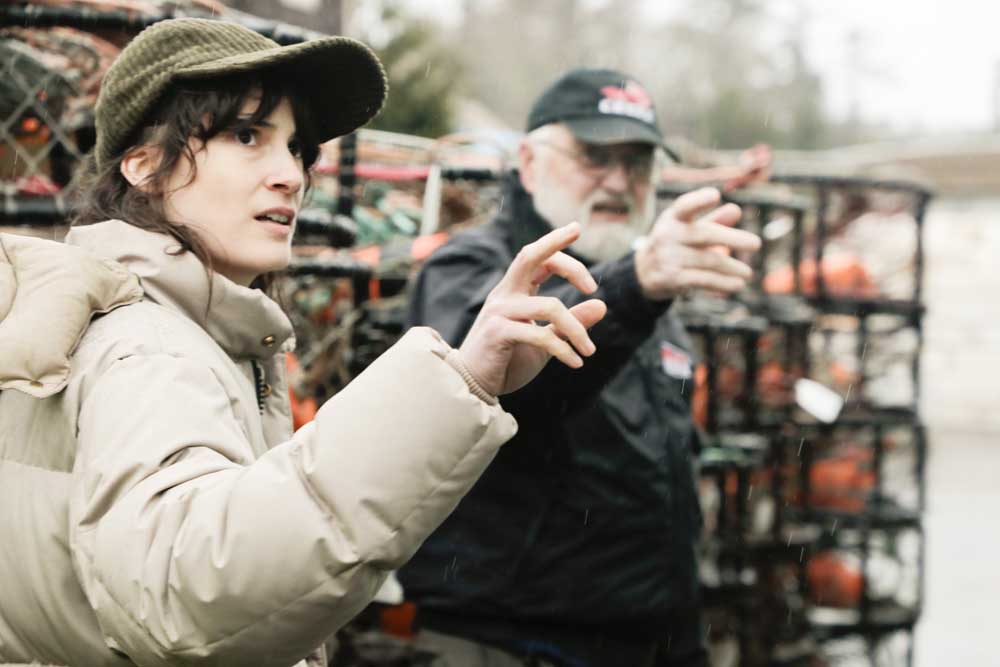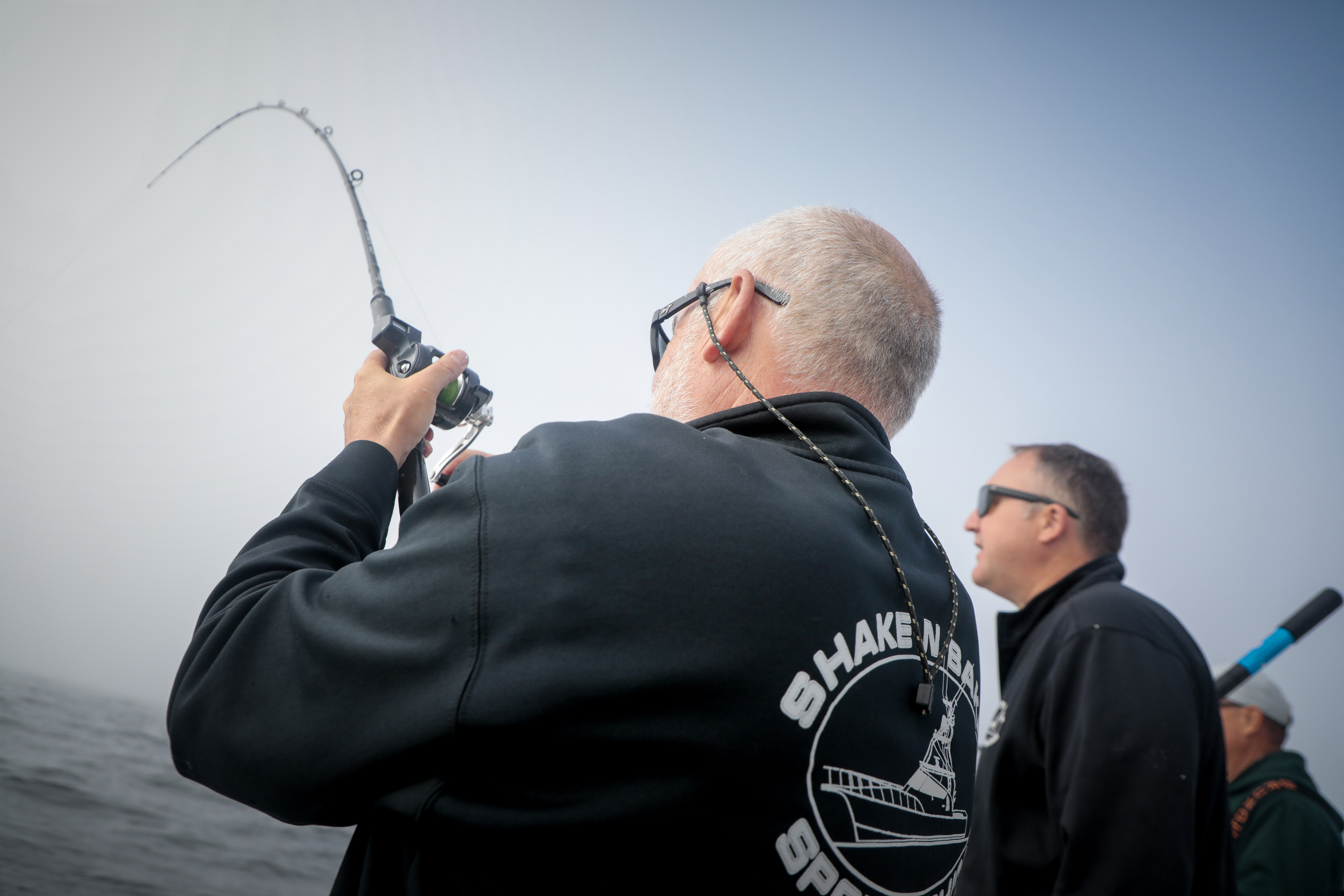Buoy 10 coho continues but other Columbia salmon seasons end
Published 10:21 am Friday, September 27, 2019

- Coho salmon are returning to Willapa Bay at numbers below the preseason estimate.
COLUMBIA RIVER — Recreational anglers this year over-harvested upriver bright fall Chinook, the stock of fish that can constrain recreational and commercial fishing times and locations throughout the Columbia River where it borders Oregon and Washington.
Trending
While the over-harvest resulted in a sudden shutdown of most salmon fishing on the Columbia River last week by the two-state Columbia River Compact, it also ate a hole in the number of salmon commercial gillnetters will be allotted this year and is limiting where and how gillnetters can fish.
The Buoy 10 fishery was allowed to remain open for hatchery coho retention through Oct. 16, but most of the Columbia River closed to all recreational salmon and steelhead fishing Sept. 26. Buoy 10 brings many fishermen to Ilwaco and Chinook, and takes places in the 18 river miles from Buoy 10 at the river’s mouth upstream to Tongue Point.
Fishing effort and success in Buoy 10 has been dropping. In the five sampling days between Sept. 16 and 22, the Washington Department of Fish and Wildlife counted 127 coho retained.
Trending
Closure of the remainder of the river comes at the tail end of a challenging year on the Columbia that saw low returns for many salmon and steelhead runs, said Bill Tweit, special assistant with the Washington Department of Fish and Wildlife. Despite those challenges, fishery managers still expect to meet conservation goals laid out at the beginning of the year.
“Despite record low numbers of summer steelhead, and poor ocean conditions, we have worked hard to offer meaningful fall Chinook fisheries in the Columbia, both above and below Bonneville,” Tweit said. “Offering those opportunities while meeting conservation guidelines is always a difficult balancing act, and one that we take very seriously.”
• Recreational anglers in the Buoy 10 fishery caught and kept 14,499 fall Chinook salmon; some 2,080 of those fish were upriver brights. Overall the catch on the entire Columbia was 27,473 fall Chinook, including 10,819 URBs.
• The US v Oregon Technical Advisory Committee on Sept. 23 retained its forecast for the combined A- and B-runs of summer steelhead at 69,200 fish, which includes 34,300 unclipped natural and hatchery-origin fish. Steelhead passage so far this year is about 20 percent of the 10-year average.
• The TAC updated the 2019 upriver fall Chinook Bonneville Dam passage expectation. Given the information available, TAC expects the Columbia River mouth return to total 355,900 adult fall Chinook (102 percent of the preseason forecast). Through Sept. 26, some 236,208 adult fall Chinook had passed Bonneville Dam. Fall Chinook passage so far this year is about 51 percent of the 10-year average.
• TAC downgraded the expected passage of upriver early-stock coho at Bonneville Dam to 53,500 adults, which is 40 percent of the pre-season projection. The preseason forecast for coho at the river’s mouth was 611,400 fish, including 388,000 early stock coho (arrive before Oct. 1) and 223,300 late stock. About 34 percent of the total run was projected to pass Bonneville.
Some 46,490 early stock coho had passed Bonneville as of Sept. 23, far less than the 10-year average on that date of 60,060. The early stock run ends at the end of September. Last year’s count on the same date was 25,749. Passage of the early stock coho is typically 86.5 percent complete by that date. Coho jacks over Bonneville total 3,984.
Fishery managers from Washington and Oregon will have to reduce the Columbia River commercial harvest to account for the number of upriver bright Chinook caught during the fall season.
“The Buoy 10 fishery has a negligible impact on the number of Chinook making their way upriver, and is still providing good opportunity for coho,” Tweit said.
The closure extends from a line projected from Rocky Point on the Washington bank through Red Buoy 44 to navigation marker 2 at Tongue Point on the Oregon bank, upstream to Highway 395 in Pasco. The Hanford Reach salmon fishery will remain open as it is not affected by this rule change.
Steelhead fishing will also close in these same areas, as the upriver steelhead run size is below forecast, and several hatchery programs within the Snake and Clearwater river basins are projected to fall short of broodstock collection goals.
Anglers harvested 10,835 of the upriver brights (URBs) through Sept. 25, which is 108 percent of the recreational allocation of 9,997 URBs. It was the catch upstream of Bonneville Dam that put anglers over their allocation and continued fishing, even if limited to hatchery coho retention, would result in more catch and release mortalities for the upriver brights, according to Compact information.
Although the Compact approved seven days of 12-hour commercial tangle net gillnetting on a variety of days through Oct. 16, it was only for the lower Columbia River estuary to Warrior Rock near St. Helens. Tangle nets, a small mesh net of 3-3/4 inches, are specifically designed to target coho.
The only mainstem harvest commercial gillnetters are allowed by the two states under a joint state salmon management policy initiated in 2013 is during the fall when the river has fall Chinook and coho salmon, and steelhead.
Gillnetters impacted
However, according to testimony by lower river commercial fisherman at the Sept. 25 Compact hearing, this is the third year in a row that the overharvest of upriver bright fall Chinook by recreational anglers has diminished their allocation.
Although the commercial gillnetters were “fully prepared to fish in zones 4 and 5,” according to Jim Wells, a commercial fishing advisor with Salmon for All in Astoria, “this is the third year in a row due to the sport overage that we’re not going to be talking today about opening those zones.” Zones 4 and 5 cover the river area from Warrior Rock to Bonneville Dam and currently contains more fall chinook, which the gillnetters and the markets they sell to prize the highest, while zones 1 through 3 are currently dominated by coho salmon.
Compact staff estimated that the catch and release mortality for keeping the Buoy 10 fishery open for coho would be 16 upriver bright fall Chinook.
That choice was also disturbing to Wells because recreational anglers “would also pull out the last remaining hatchery silvers (coho salmon) heading to Select Areas.” Providing hatchery fish for Select Areas in the lower river is a part of the joint state salmon management policy.
According to management guidelines, recreational anglers are allotted 70 percent of upriver bright fall Chinook impacts, while commercial fishers are allowed 30 percent.
“Still, if you had closed all sport fishing yesterday, we would only get 24 percent and we are guaranteed 30 percent,” Wells said. “That 16-fish impact could make or break a second tangle net fishery. You need to be working on rescinding that decision you made yesterday,” speaking of the Compact’s decision to leave the Buoy 10 fishery open for hatchery coho retention.
“Every time you make a mistake like this, we (commercial gillnetters) suffer economically,” said Steve Fick of Salmon for All. “This is the third year in a row. Do you have plans for reparations?”
In addition, with gillnetters closing in on their allotment, the Compact is also closing the commercial harvest of white sturgeon as of Sunday, Oct. 6.









